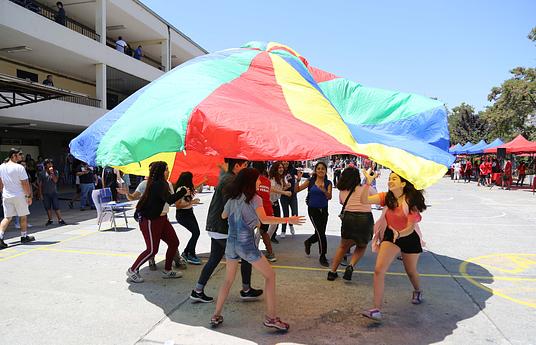With 65% of children entering primary school today destined for jobs that don't yet exist, we need to reimagine education. If we want our children to stay relevant in an ever-changing job market, we must equip them with essential 21st-century skills. We should encourage them to learn how to learn and keep growing by giving them the freedom to invent, experiment, be creative, and above all, play!
Our innovation replaces rigid classroom structures built on control with a flexible, differentiated learning landscape designed to cultivate adaptable minds. Instead of fixed constraints, our learning typology creates a framework for discovery—a dynamic environment rich with possibilities. By offering choices, we foster the development of skills driven by inner motivation, allowing each learner to thrive in their unique way and learn how they learn best in different situations. Our typology activates the physical environment as a pedagogical tool for student-centered learning. It allows students to choose where to be and for how long. This freedom of choice is achieved through a differentiated learning landscape that supports various modalities. The learning landscape provides spaces for tranquility as well as hectic activity, accommodating individual work or group collaboration, presentations, hands-on modeling, and engaging all senses. By placing the learner at the center, we empower students to configure their unique learning journeys. This self-directed approach unlocks essential skills like adaptability and autonomy, motivating every learner.
The design approach is being used across the world. Within the last fifteen years, the studio has gone from doing design interventions and redesign of existing schools to being involved in the planning of school layouts and reform processes with educational legislators – from public and private schools in 20 + countries to working with governments, regions, and municipalities worldwide. In practice, the innovative learning typology can be used to shape new school buildings, remodel existing spaces and give direction for low-budget interventions that create flexible and differentiated learning environments. The studio aims to work with educational projects that have a wide-ranging societal and political impact to lead a transformation of learning spaces.
Contact our design studio for large-scale interventions in new school buildings, or the remodeling of existing spaces. For low-budget interventions, follow the six design principles in the reconfiguration of furniture as described in our book ‘Designing for a Better World Starts at School’ and follow the ten tenets in ‘Play to Learn – Designing for Uncertainty’.



